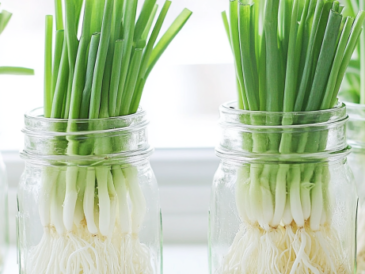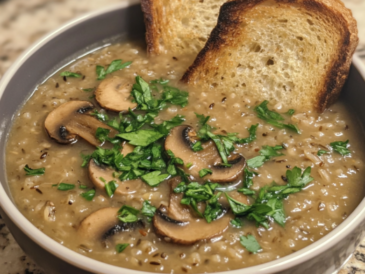Anise (Pimpinella anisum) is an aromatic herb 🌿 known for its unique, licorice-like flavor! Whether you’re a newbie gardener or a seasoned pro, growing anise in pots is a fun and satisfying way to bring this delightful spice 🌸 into your kitchen. Plus, its fragrant seeds, lovely flowers, and culinary versatility make it the perfect addition to any home garden!
🌟 Why Grow Anise at Home?
Growing your own anise means having fresh, high-quality spices at your fingertips! Not only do you control the flavor 🌿, but anise plants also add a burst of green charm to your home. Let’s dive into how you can grow this awesome herb, from selecting the perfect pot to harvesting your very own seeds! 🌱✨
🪴 Choosing the Right Pot for Your Anise Plant
📏 Size Matters
Anise starts off small, but don’t be fooled—it needs space! Choose a pot that’s at least 12 inches deep and wide 🌿 to allow for proper root development.
🚿 Drainage Is Key
Make sure your pot has drainage holes 🕳️ at the bottom to avoid waterlogged soil. Root rot is a no-go for happy plants!
🌞 Terracotta Wins!
Although you can use plastic or ceramic pots, terracotta is the best choice for anise 🌱. It allows better air circulation to the roots and regulates moisture perfectly.
🌱 Preparing the Soil for Anise
Anise thrives in rich, well-draining soil 🪴, and preparing it correctly will set your plant up for success.
🧪 The Perfect Potting Mix
Use well-draining potting soil that holds moisture without becoming soggy. If you’re feeling DIY, mix garden soil with compost and a bit of sand 🏖️ or perlite for drainage.
🌡️ Optimal pH for Growth
Anise prefers slightly alkaline soil with a pH between 6.5 and 7.5. Grab an at-home pH kit to test, and adjust by adding lime 🌿 (to raise pH) or sulfur (to lower it).
🌼 Planting Anise Seeds
With your pot and soil ready, it’s time to plant those seeds! 🌱
🌸 When to Plant
Anise is a warm-weather lover! 🌞 Plant in the spring, after the last frost, to ensure successful germination.
🪴 How to Sow Your Seeds
- Depth: Plant seeds about 1/4 inch deep 🌱.
- Spacing: Give them space—about 1 inch apart.
- Watering: Keep the soil evenly moist 💧 but not waterlogged. Seeds should sprout in 7 to 14 days!
☀️ Caring for Your Anise Plants
Once your seeds sprout, caring for anise is easy!
🌞 Sunlight Needs
Anise LOVES the sun! ☀️ Ensure your plant gets 6-8 hours of direct sunlight daily. Place it near a sunny window or outside for best results.
💧 Watering Tips
Water regularly to keep the soil moist 💦 but avoid overwatering. No soggy roots allowed!
🌿 Fertilizing for Growth
Feed your anise with a balanced fertilizer every few weeks during the growing season 🌻. This helps ensure healthy growth and a more flavorful harvest!
✂️ Pruning for Healthier Plants
Prune your anise once it starts flowering 🌸 to encourage new growth and prevent it from self-seeding too much.
🍂 Harvesting Anise Seeds
The exciting part? Harvesting those fragrant seeds!
🌾 When to Harvest
Harvest when the seed heads turn brown and dry—usually in late summer or early fall 🍂.
✂️ How to Harvest
Cut the entire plant and hang it upside down 🌱 in a dry, well-ventilated space. Once fully dry, rub the seed heads to release the seeds.
🏺 Storing Your Harvest
Store your dried seeds in an airtight container and keep them in a cool, dark place. These can last up to a year!
🍽️ Using Anise Seeds in the Kitchen
Now comes the fun part—using your freshly harvested seeds! 🌾✨
- Baked Goods: Add anise to cookies, cakes, and bread for a sweet, licorice flavor 🍞.
- Liquors and Teas: Use the seeds to make liqueurs like absinthe 🍸 or brew a digestive tea.
- Savory Dishes: Sprinkle ground anise over meats or roasted veggies 🍖 for an aromatic kick.
🌻 Extra Tips for Successful Anise Growing
- Companion Planting: Anise grows well with carrots, tomatoes, and onions 🥕🍅. They make a great team!
- Pest & Disease Resistance: Watch out for aphids 🐜 and powdery mildew, but anise is generally resistant.
- Avoid Overcrowding: Anise self-seeds easily, so be ready to thin out your plants or transplant as needed!
🌿 Conclusion: From Seed to Spice 🌱
Growing anise in pots is an amazing way to bring fresh, homegrown flavor to your kitchen! With just a few simple steps—picking the right pot, preparing the soil, planting, and caring for your herb—you’ll be rewarded with a bountiful harvest of seeds 🌾 to use in all your favorite dishes.
So, what are you waiting for? Start your anise-growing adventure today and spice up your cooking with the freshest flavors from your own home! 🌟🌿




